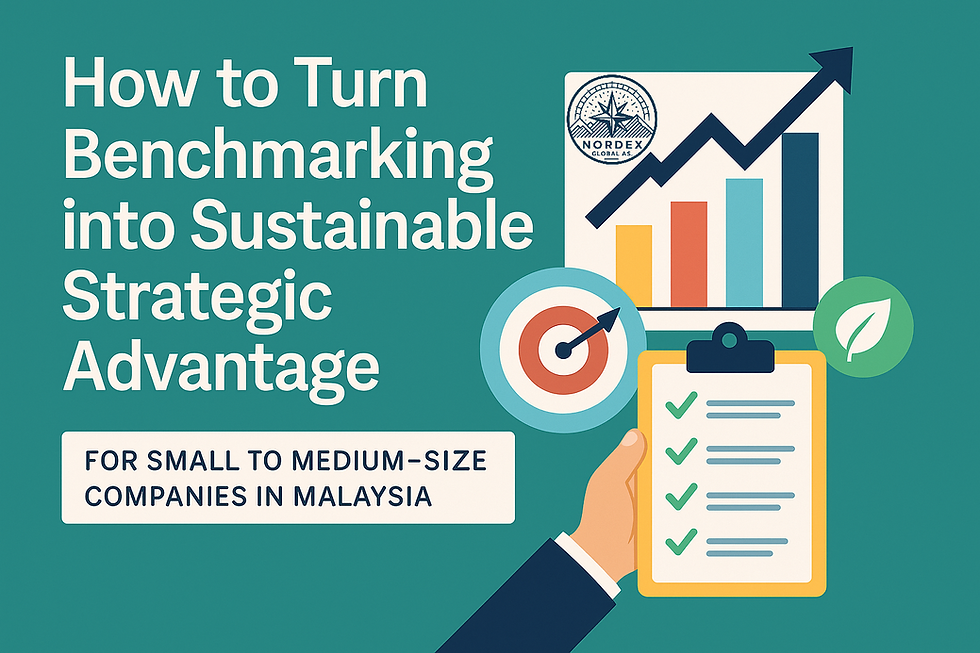Tackling Scope 1 and 2 Emissions in Southeast Asia: Key Challenges and Success Factors
- Ibarahim Sohel

- Mar 23
- 3 min read

As global demand for climate accountability grows, Southeast Asian (SEA) companies are also coming under increasing pressure to quantify and cap their Scope 1 and 2 greenhouse gas (GHG) emissions. Scope 1 and 2 emissions represent the heart of ESG (Environmental, Social, Governance) compliance and are becoming more and more the arbiter of global competitiveness—most notably for export-driven sectors.
While Scope 1 and 2 emissions may seem more manageable than Scope 3, even most SEA companies have their own issues in tracking and reducing them. This article explores the nature of the challenges and success factors in managing them effectively.
What Are Scope 1 and 2 Emissions?
Scope 1: Direct GHG emissions from sources owned or controlled by an organization—e.g., fuel used in company vehicles, generators, or manufacturing processes.
Scope 2: Indirect emissions associated with the generation of purchased electricity, heating, or cooling consumed by the business.
These emissions form the foundation of a business's carbon footprint and are often required in sustainability reports by international buyers and regulators.
Key Challenges of Southeast Asia
1. Low Awareness and Expertise
Most SEA businesses, especially SMEs, have no knowledge of GHG protocols, carbon accounting methods, or why Scope 1 and 2 data matters. Lacking this elementary knowledge, emission tracking is typically ignored.
Example: A Vietnamese clothing exporter may not realize that failing to report emissions will lose them valuable European customers who are boosting ESG standards.
2. Lack of Adequate Regulatory Pressure
A few countries like Singapore have strong sustainability reporting frameworks, but in most of SEA, emissions disclosure is voluntary. Without local enforcement or carbon pricing, most firms don't feel pressured to shift.
3. Data Gaps and Technical Barriers
Companies struggle to find credible information. Local emission factors for fuel or electricity are either missing or out of date, and accurate calculations are complicated—especially for hybrid operations using grid electricity and diesel generators.
4. Few Resources
Buying consultants, in-house sustainability teams, or tools is costly. For SMEs with already thin margins, monitoring emissions can be too expensive an indulgence unless customers or investors require it.
5. Diverse Supply Chains
SEA companies are likely to be part of extended supply chains with little control over energy use or logistics. It is hard to report when they hire landlords, subcontractors, or third-party suppliers to provide utilities and fuels.
Key Success Factors
All this aside, many SEA companies are succeeding. These approaches are assisting them to improve their Scope 1 and 2 emissions:
1. Leadership Commitment
Companies that place ESG on their top-of-mind executive agenda are more apt to succeed. If leadership views emissions reduction as a business imperative—instead of a requirement—resources and accountability lag behind.
2. Upskilling and Internal Training
Key knowledge on how to measure and reduce emissions goes a long way. Companies that invest in staff training or collaborate with ESG consultants have the ability to build internal sustainability champions and establish a low-carbon culture.
3. Use of Digital Tools
Digital platforms for tracking utility usage, fuel, and process data can make emissions calculation and precision easier. Most software solutions now cater to SMEs with user-friendly dashboards and local area emission factors.
Example: A Thai logistics firm used a fuel-tracking app and GPS tracking to reduce vehicle idling time, reducing Scope 1 emissions by over 10% within one year.
4. Utilization of Renewable Energy
Reducing Scope 2 emissions is typically possible with cleaner energy supplies. On-site solar, RECs (renewable energy certificates), or green PPAs (power purchase agreements) are more readily accessible across the region.
5. Buyers and Investors
International buyers are increasingly more demanding of emissions data. Providing Scope 1 and 2 success voluntarily can strengthen supplier partnerships as well as attract ESG investor capital. It also differentiates companies from competitors.
Final Thoughts
For Southeast Asian firms, especially supply chain partners and exporters, Scope 1 and 2 greenhouse gas management becomes more critical. While cost, information, and knowledge constraints persist, the drivers from international markets are growing—and so is the action.
Those who move early and invest in organizational capability and real-world decarbonization potential will benefit over growth, regulatory compliance, and long-term survival in a low-carbon world.





Comments